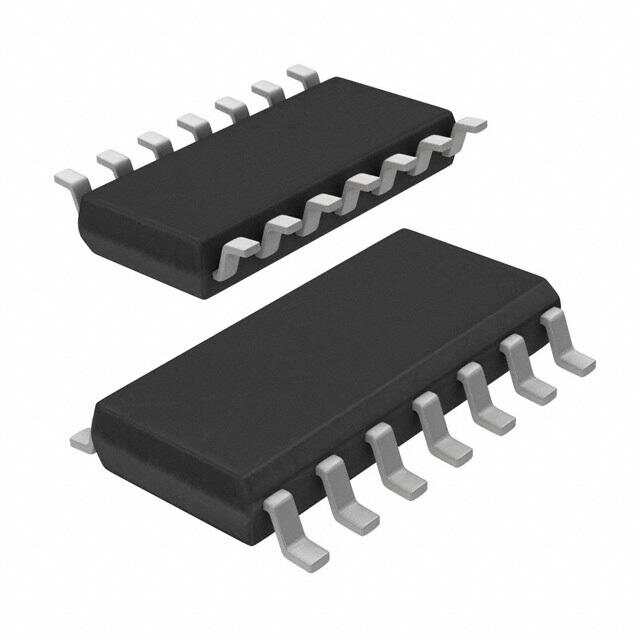Email format error
Email cannot be empty
Email already exists
6-20 characters(letters plus numbers only)
The password is inconsistent
Email format error
Email cannot be empty
Email does not exist
6-20 characters(letters plus numbers only)
The password is inconsistent


Technological Applications and Market Demand
Technological Applications and Market Demand
In today's increasingly digital environment, the demand for Interface Transceivers continues to rise exponentially. With the advent of technologies like 5G and the rapid expansion of IoT ecosystems, there is an ever-growing need for seamless, high-speed data transmission capabilities. This has spurred manufacturers to innovate continuously, developing Interface Transceivers that can meet the stringent performance requirements of industries ranging from telecommunications to healthcare and beyond.
Trends in Interface Transceivers Development
The development of Interface Transceivers has been shaped by several key trends that reflect advancements in technology and evolving market demands:
Higher Data Rates and Bandwidth: With the proliferation of high-bandwidth applications such as streaming video, virtual reality, and IoT, there is a continuous push towards Interface Transceivers capable of supporting higher data rates. Modern transceivers are designed to handle speeds ranging from 10 Gigabits per second (Gbps) to multi-terabit per second (Tbps) for data-intensive applications.
Compact and High-Density Designs: There is a growing emphasis on reducing the footprint of Interface Transceivers while increasing port density. This trend is driven by the need to optimize space within data centers and networking equipment. Manufacturers are developing smaller form factors and integrating multiple channels into single modules to maximize efficiency and scalability.
Energy Efficiency: Energy consumption is a critical concern in data center environments. New generations of Interface Transceivers are designed with energy-efficient components and power management features to minimize operational costs and environmental impact. Technologies such as low-power consumption optics and smart power management algorithms are becoming standard in modern transceiver designs.
Advanced Signal Processing and Error Correction: As data transmission speeds increase, the importance of signal integrity and error correction capabilities grows. Advanced signal processing techniques, including forward error correction (FEC) and adaptive equalization, are integrated into Interface Transceivers to ensure reliable data transmission over long distances and in challenging environments.
Integration of Optical and Electrical Components: Hybrid integration of optical and electrical components within Interface Transceivers is becoming more prevalent. This integration allows for seamless communication between different types of networks, such as fiber-optic and copper-based Ethernet, while optimizing performance and reducing latency.
Smart Monitoring and Management: The advent of software-defined networking (SDN) and network function virtualization (NFV) has driven demand for Interface Transceivers with built-in monitoring and management capabilities. These transceivers can collect real-time performance data, diagnose network issues, and adapt to dynamic network conditions, enhancing overall network reliability and efficiency.
Compatibility with Emerging Standards: Interface Transceiver development is closely aligned with emerging industry standards and protocols, such as 400G Ethernet, 5G wireless, and PCIe Gen 5. Manufacturers invest in research and development to ensure their products comply with these standards, enabling seamless interoperability and future-proofing network infrastructures.
These trends underscore the dynamic nature of Interface Transceiver development, driven by technological innovation and the evolving needs of global networks. As demand for higher performance, scalability, and energy efficiency continues to grow, Interface Transceiver manufacturers will play a crucial role in shaping the future of communication technology.

Customization and Manufacturing of Interface Transceivers
To cater to diverse customer needs and specific application requirements, the concept of Interface Transceiver ODM (Original Design Manufacturing) has gained significant traction. ODM services enable clients to collaborate closely with manufacturers to tailor Interface Transceivers according to unique technical specifications and design preferences. This collaborative approach not only accelerates product development timelines but also ensures that the final products meet exacting standards of performance and reliability.
Industry Cases and Application Scenarios
For instance, telecommunications providers often require Interface Transceivers customized to support specific protocols and transmission distances across their network infrastructure. By leveraging ODM services, these providers can swiftly deploy solutions that optimize network efficiency and meet evolving consumer demands for faster and more reliable connectivity.
Future Outlook and Innovations
Looking ahead, the future of Interface Transceivers promises continued innovation and adaptation to meet the escalating demands of digital connectivity. Emerging technologies such as artificial intelligence (AI), edge computing, and quantum communication will further drive the evolution of transceiver designs. AI-powered analytics integrated into Interface Transceivers could optimize network performance in real-time, predicting and preemptively addressing issues before they impact operations.
Moreover, advancements in materials science may lead to the development of transceivers with enhanced durability and performance, capable of operating in extreme environments with minimal maintenance. Quantum communication technologies hold promise for ultra-secure data transmission, potentially revolutionizing sectors where data integrity and privacy are paramount.
Global Impact and Sustainability
Beyond technological advancements, the sustainability of Interface Transceivers will also become increasingly crucial. Manufacturers are exploring eco-friendly materials and manufacturing processes to reduce carbon footprints and minimize electronic waste. Energy-efficient transceivers not only lower operational costs but also contribute to broader sustainability goals, aligning with global initiatives for greener technologies.
Collaboration and Standardization
Collaboration among industry stakeholders, including manufacturers, telecommunications providers, and regulatory bodies, will be vital in establishing standardized practices and interoperable solutions. Clear industry standards ensure compatibility across networks and enable seamless integration of new technologies, fostering innovation and global connectivity.
Broader Implications in Communication Technology
Interface Transceivers are not only integral to current communication networks but also pivotal in paving the way for future advancements. As the foundation of data transmission, these devices enable the seamless integration of emerging technologies such as Internet of Things (IoT), smart cities, autonomous vehicles, and telemedicine. Their ability to support high-speed, reliable data transfer across vast distances is essential for unlocking the full potential of these innovations.
Impact on Industries and Society
Industries across sectors—from telecommunications and healthcare to finance and entertainment—rely heavily on Interface Transceivers to maintain operational efficiency and deliver enhanced services. In healthcare, for example, real-time data transmission facilitated by transceivers supports telehealth initiatives, remote patient monitoring, and medical diagnostics, thereby improving patient outcomes and accessibility to healthcare services.
Similarly, in finance and e-commerce, secure and high-speed data transfer underpins transactional integrity and customer trust. Enhanced bandwidth capabilities provided by advanced transceivers enable smoother online experiences, supporting everything from video streaming to cloud computing and virtual reality applications.
Conclusion
In conclusion, Interface Transceivers play an indispensable role in modern communication ecosystems, facilitating the seamless exchange of data across diverse networks and devices. As technological innovations continue to reshape the landscape of communication technology, Interface Transceiver ODM services will remain pivotal in driving forward industry standards and meeting the dynamic needs of global markets.
Through this exploration, we have underscored the critical importance of Interface Transceivers in enabling the digital connectivity that powers our interconnected world. As we look to the future, the continued evolution and customization of these essential devices will undoubtedly play a key role in shaping the next generation of communication technologies.

